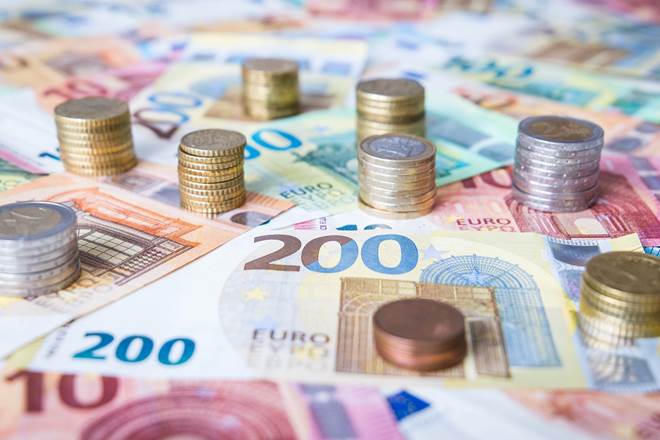Remember, Europe is a continent, not a country. Just as Mexico, Canada, and the United States each have different North American currencies, Europe’s got fat stacks for a variety of different countries. From euros and pounds to Swiss francs and Hungarian forintok, here’s your guide to European currency.
Your guide to European currency
Leave your pesos, Washingtons, loonies, Benjamins, and toonies at home, North Americans. You’ll need a wallet full of colorful currency when visiting Europe.
Can I use an American credit card in Europe?
Yes, many American credit cards are accepted throughout Europe including MasterCard, Visa, and American Express.
Can I take out money from my account at European banks?
Yes, you can withdraw money from European bank ATMs. Keep in mind that you may be charged fees from both your bank and the ATM.
Image Credit: Getty Images, Tim Robberts
What is the currency in Europe?
There is no single currency in Europe, though many European countries use the euro. The British pound is also used by the four nations of the United Kingdom: England, Scotland, Wales and Northern Ireland. Any country not using the pound or the euro uses its own individual currency.
What currencies to use when traveling Europe?
You’ll want to use the currency accepted by the countries you’re traveling to. For example, the accepted currency in Northern Ireland is the British pound, while the currency used in the Republic of Ireland is the euro. Keep in mind that your credit cards and debit cards will likely work in most countries if you’re willing to pay any applicable transaction or currency exchange fees.
What countries use the euro?
The countries currently using the euro include: Austria, Belgium, Croatia, Cyprus, Estonia, Finland, France, Germany, Greece, Ireland, Italy, Kosovo, Latvia, Lithuania, Luxembourg, Malta, Montenegro, the Netherlands, Portugal, Slovakia, Slovenia, and Spain.
What is the currency for UK?
The currency for the UK is the British pound sterling, abbreviated as GBP and the currency symbol is £. England, Scotland, Wales, and Northern Ireland use the pound. The Republic of Ireland, not part of the United Kingdom, uses the euro. Note that in Scotland and Northern Ireland you might encounter differently designed banknotes, but you'll still be dealing with British pounds.
British pounds. Image Credit: Getty Images, Rosemary Calvert
What countries do not use the Euro?
Along with the four nations of the United Kingdom, the following countries on the European continent do not use the euro: Switzerland uses the Swiss franc, Denmark uses the Danish krone, Sweden uses the Swedish krona, Norway uses the Norwegian krone, Czechia uses the Czech koruna, Poland uses the Polish złoty, Ukraine uses the Ukrainian hryvnia, Hungary uses the Hungarian forint, Belarus uses the Belarusian ruble, Moldova uses the Moldovan leu, Romania uses the Romanian leu, Serbia uses the Serbian dinar, Bosnia-Herzegovina uses the convertible mark, Turkey uses the Turkish lira, Albania uses the Albanian lek, and North Macedonia uses the Macedonian denar.
European currency to USD
Currency rates change every day, but most days they only rise or fall by a few cents. For example, the USD to GBP (British pound sterling) has been roughly $1 for every £0.80 for months. The USD to Euro rate has been roughly $1 for every €0.91. USD to Swiss francs: $1 to CHF 0.88. (Note: many European languages write out money differently, using a comma where in English we'd use a decimal point, and a space or point where we'd use a comma. Keep this in mind when you're shopping. For example, you might see €6.50 written as €6,50 and €2,300.45 as €2 300,45 or €2.300,45.)
How to exchange currency in Europe
Exchanging USD for European currency is easy. Most airports have a currency exchange desk so you can swap bills when you arrive. Many large train stations also have currency exchange desks; and if all else fails, you should be able to exchange your currency at a hotel or bank.
Swiss Francs. Image Credit: Getty Images, Yevgen Romanenko
How much cash should I keep on me for traveling Europe?
If you’re sticking to a city or large town, you’ll rarely need to use cash. In villages or more rural areas, it’s a good idea to overestimate how much you’ll need. In most cases, keeping between €50 and €200 is a good range, especially if you plan on shopping from street vendors. Remember to keep a handful of coins on you for using public restrooms.
Can I exchange my European currency back to US dollars when I leave?
Yes, you can swap your European currency for US dollars at most major European airports. If you’re a country-counter with an insatiable wanderlust, you may want to keep your Euros even when you fly back into the Western Hemisphere—you can use it in North America, South American, and the Caribbean. French Guiana in South America, Saint Pierre and Miquelon off the coast of Canada, and the Caribbean islands of Saint-Barthélemy, Martinique, and Guadeloupe all officially use the euro.
Danish Krone. Image Credit: Getty Images, johan10
Do I need European currency to buy train tickets?
Not unless you’re trying to make change at a ticket desk. Download the Trainline app and purchase tickets directly from your phone—in US dollars! Pay for and pocket your e-tickets so you’re not strapped for cash when you travel.
Let us be your guide, traveler
First time traveling Europe? Not sure what to pack? Unsure about overnight train travel? Check out the Trainline blog to learn everything you need to know about vacationing or studying abroad in Europe.
Header Image Credit: Getty Images, Photofex


